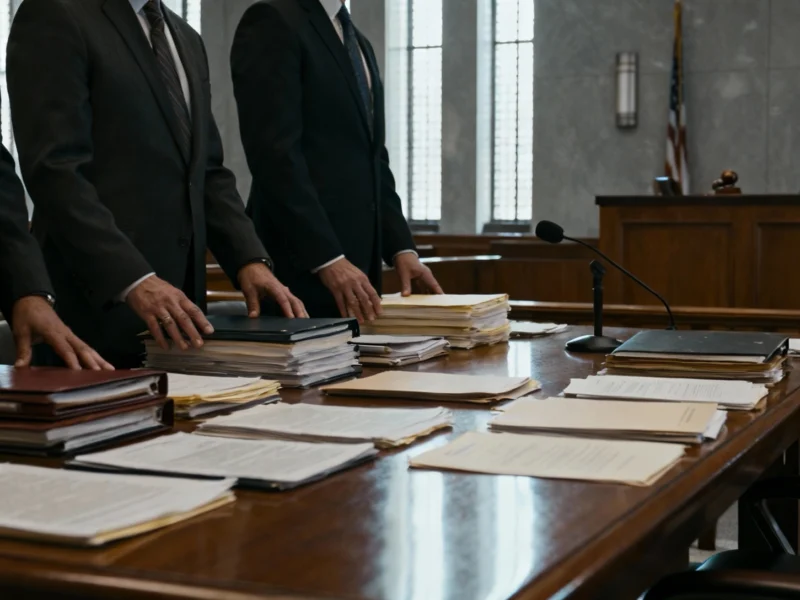Legal Challenge to Federal Workforce Reductions
Multiple labor unions are preparing to ask a federal judge to block the Trump administration from conducting mass layoffs during the government shutdown, according to reports filed in U.S. District Court. The unions contend that firing approximately 4,000 federal employees would violate civil service protections and represent illegal political retribution, sources indicate.
Shutdown Becomes Battleground Over Federal Workforce
The government shutdown that began October 1 has become the latest front in the ongoing battle over the size and scope of the federal government, analysts suggest. According to reports, the administration has viewed the funding lapse as an opportunity to advance its long-standing goal of reducing the federal workforce while applying pressure to Democratic Party opponents who refuse fiscal demands.
The report states that President Donald Trump and his aides have repeatedly expressed satisfaction with the shutdown’s timing, seeing it as a chance to accelerate workforce reductions that have already removed hundreds of thousands of civil servants from government positions.
Legal Arguments Over Presidential Authority
At the heart of the legal dispute is whether funding lapses automatically justify mass terminations of protected civil service positions. The unions argue that expired appropriations “do not repeal, vacate or otherwise have any effect” on the statutory framework governing federal employment, according to their court filing.
Sources indicate the administration maintains the president possesses broad authority to reconfigure the federal workforce during funding gaps. However, the report states that Justice Department lawyers have sent mixed signals, at times describing the layoffs as “hypothetical” while simultaneously acknowledging the government had begun distributing termination notices to thousands of employees.
Procedural Missteps Complicate Administration’s Position
The administration’s legal position has been complicated by several procedural errors, according to court documents. Sources indicate the government initially provided incorrect information to the court regarding the number of employees targeted for layoffs and the timing of those actions.
In one notable incident, the Department of Health and Human Services erroneously sent layoff notices to hundreds of scientists at the Centers for Disease Control and Prevention, many of which were later rescinded. These missteps are expected to feature prominently in the arguments before U.S. District Judge Susan Illston during Wednesday’s hearing.
Broader Political and Legal Context
The current legal battle occurs against the backdrop of other significant governmental developments. Recent analysis suggests that Supreme Court voting rights cases could reshape future political battles, while major economic announcements like Stellantis’ $13 billion U.S. expansion demonstrate how corporate investment decisions intersect with government policy. Meanwhile, international developments such as Germany’s digital sovereignty milestone show alternative approaches to governance during periods of technological transformation.
Unprecedented Scale of Proposed Layoffs
According to the report, the administration has provided only partial estimates of which agencies would face staffing reductions and how many workers might be affected. The 4,000 figure represents just the latest wave in what unions describe as a systematic effort to dismantle federal workforce protections.
The unions, led by the American Federation of Government Employees, maintain that the president cannot remove civil servants without clear congressional authorization, particularly during a period when the government is supposed to be maintaining only essential services, according to their legal filing.
Political Motivation Allegations
Sources indicate the unions plan to highlight President Trump’s repeated threats to target “Democrat programs” as evidence that the layoffs are politically motivated rather than fiscally necessary. The report states this argument will form a central part of their request for a temporary restraining order against the administration.
The outcome of Wednesday’s hearing could have significant implications for the balance of power between the executive and legislative branches, as well as for the employment security of hundreds of thousands of federal workers, analysts suggest.
This article aggregates information from publicly available sources. All trademarks and copyrights belong to their respective owners.



